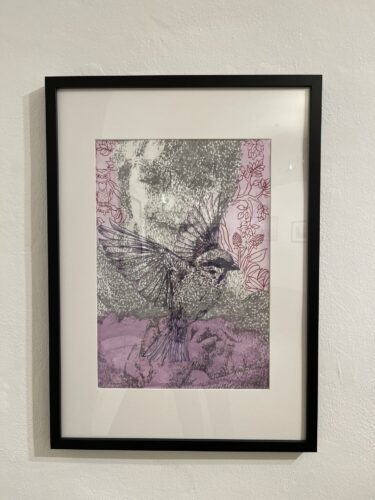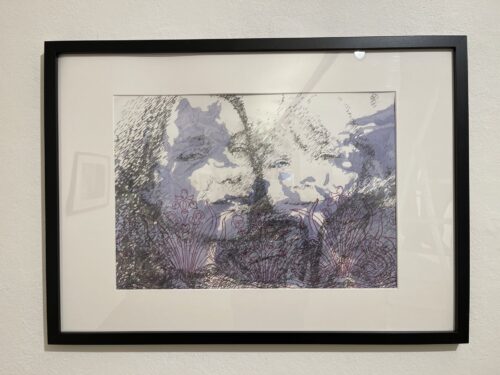



In this exhibition I deal with the theme of family in a narrative form. A series of events, in a time frame of several years.
It has become a very personal series, the desire and motivation developed from the lack of a family album.
The focus is on motherhood, femininity, care, growth, change and movement, companionship, happiness, love and tenderness.
The flowers serve as a metaphor for the emotional and experiential situations.
For example, the lily, which stands for femininity and fertility, or the cyane, which signals confidence.
The graphics consist of two layers, the first layer is drawn in graphite and includes animals as the subject. The animals are in the background, partly obscured and partly hidden. In ancient Egyptian mythology, for example, wolves were regarded as guides for the soul, and many warriors and heroes identified with the predator.
The animals are symbolic motifs, and the stag is also regarded as a soul guide in Celtic myths and fairy tales. It knows its way through the thicket of the forest and shows seekers and wanderers the right path.
The second level is painted in ink and shows one subject per year from the children’s photo archive, selected from countless children’s photos.
The importance of the relationship between mother and child is a central theme in this series. Maternal love is the foundation for the first bond in life and is still a great mystery of behaviour in humans and animals that has been little researched. How nature’s deep feelings develop and influence behaviour and why it sometimes fails.
I see the connection between children and animals mainly in the innocence, purity and instinctiveness with which they are endowed by nature.
Children go towards the open, out of feeling, because they are not aware of temporality, whereas adults are orientated towards reflective and interpretative knowledge.
The animal does not recognise the limits of transience and lives exclusively in the moment, just like small children in the here and now.
Adult humans are aware of their own death….
Maria Pia Lattanzi